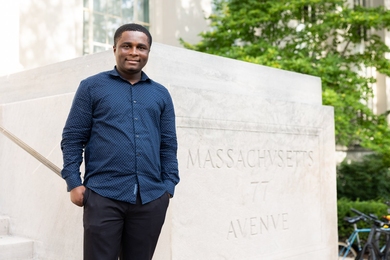Chemist Donna Nelson expects dramatic change from tiny gestures. But when she looks back to the day she taped an article about a survey of women chemistry professors to her office door at the University of Oklahoma, she still wonders at its ripple effects.
"It started from a trivial event. Chemical and Engineering News published the survey. I taped it to my door; my undergrads saw it and asked, 'What about minorities?' I called the author, asked if there was an objection to expanding the survey, and--surprises followed," Nelson recalled.
An associate professor of chemistry at the University of Oklahoma, Nelson completed her surveys of diversity among tenured and tenure-track faculty at America's top fifty departments in each of 13 different science and engineering disciplines in 2001. She received a grant from the Ford Foundation to disseminate the results and spent some of spring in 2003 at MIT on the Ford grant.
The data in chemistry provided the biggest surprise, she said in an interview at MIT.
"The number of African American and Native American assistant professors in chemistry departments was zero," said Nelson. In addition, Nelson's survey showed that those same departments had hired more international scientists than US females and US minorities combined.
The second surprise arose from comparing the data across different disciplines.
"It's common to think that engineering departments are worse than other sciences for diversity, but no. For example, chemical engineering departments had been hiring and promoting African Americans, in contrast to chemistry. And engineering department chairs generally were very supportive of the survey itself," she said.
Nancy H. Hopkins, Amgen professor of biology at MIT, encouraged Nelson to visit MIT. Hopkins is co-chair of the Diversity Council at MIT and author of the groundbreaking 1999 "Report on the Status of Women Faculty in the School of Science at MIT."
"Donna Nelson brought national attention to the stunning underrepresentation of many minority groups on science and engineering faculties. Her data are causing universities to re-examine why they are failing to attract a fuller range of talent to these positions.
"When Donna suggested spending sabbatical time at MIT, we and the Ford Foundation, which funds some of our work on faculty diversity, were delighted to support her to continue to analyze this critical issue and to work with faculty here to identify remedies," said Hopkins.
While visiting MIT, Nelson has addressed numerous faculty groups, including the Dean's Group of the Academic Council; the Chairs of the Gender Equity Committees; Councils of the Schools of Engineering and Science and the Council on Faculty Diversity.
MIT is a "great environment. People here approach me and ask questions about my studies. That openness is a good sign. The progress in diversity made by MIT will help the entire nation, because it will serve as a role model for other universities," said Nelson, who will visit MIT this fall as well.
In March 2002, a study of the status of women faculty in each of the schools at MIT - architecture, engineering, humanities, arts, and social sciences, and management - was completed.





